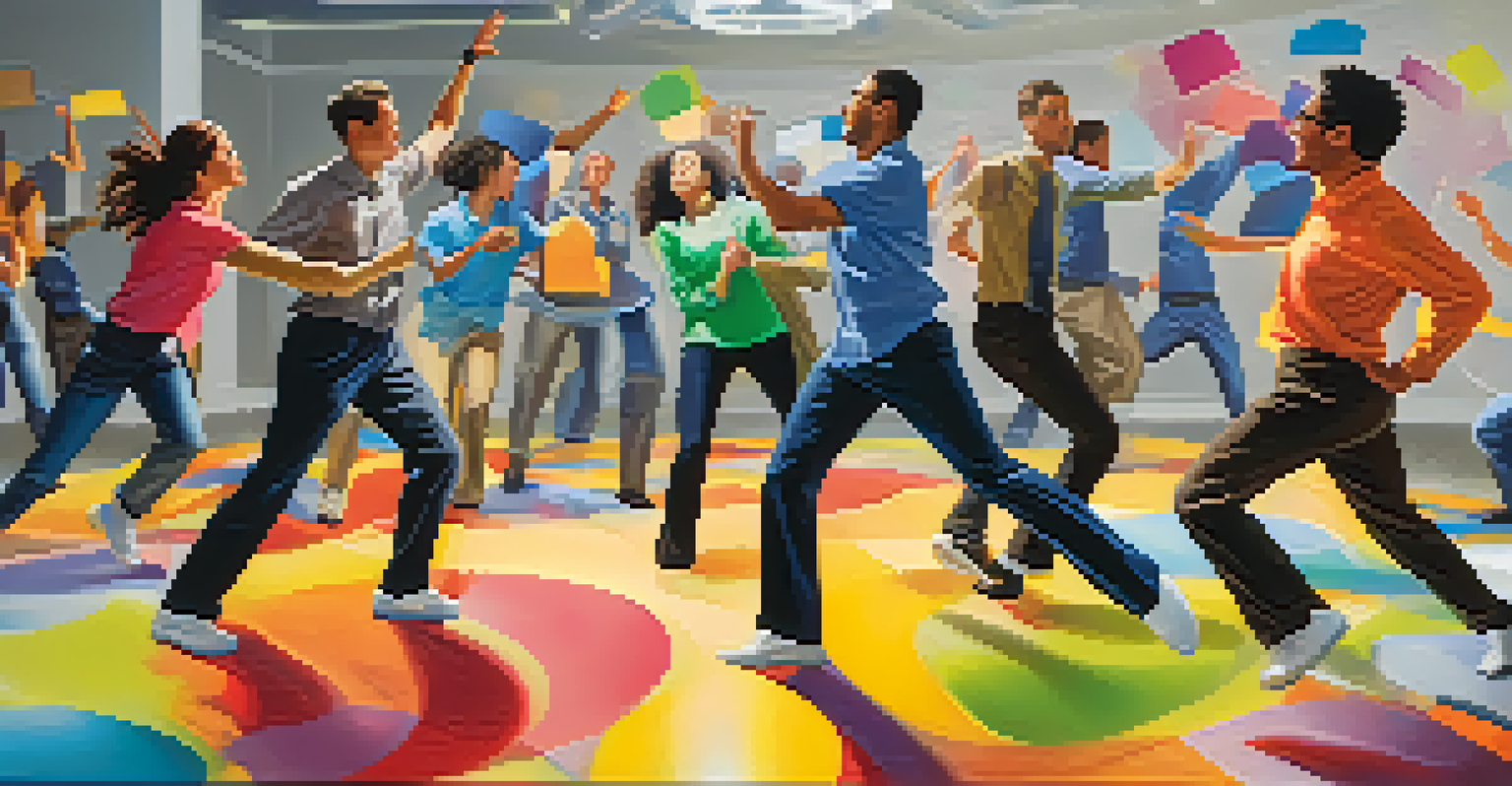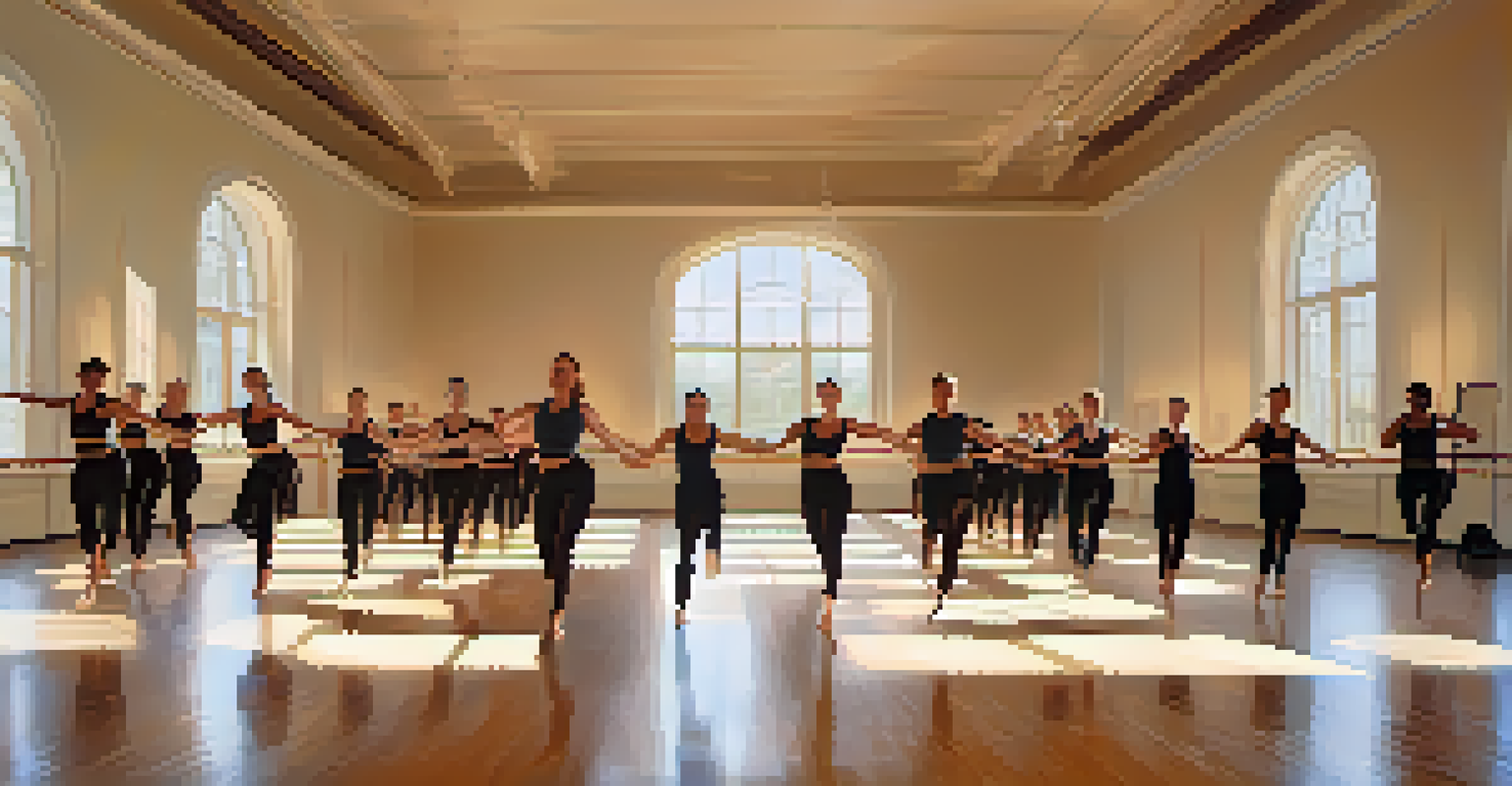The Science Behind Dance and Employee Engagement Strategies

Understanding Employee Engagement and Its Importance
Employee engagement is more than just a buzzword; it refers to the emotional commitment an employee has to their organization. Engaged employees are more productive, motivated, and likely to contribute positively to the workplace culture. This engagement can lead to lower turnover rates and a more vibrant workforce, ultimately benefiting the organization’s bottom line.
Engaged employees are more productive, motivated, and likely to contribute positively to the workplace culture.
To grasp the significance of employee engagement, consider how it can directly influence performance metrics. For instance, companies with highly engaged teams often see a substantial increase in customer satisfaction and profits. This dynamic highlights the crucial link between employee morale and organizational success.
In today's fast-paced work environment, fostering employee engagement is essential for innovation and adaptability. Organizations that prioritize engagement not only attract top talent but also retain it, creating a robust team ready to tackle challenges creatively.
The Connection Between Dance and Human Emotions
Dance is a universal language that transcends cultural boundaries and speaks directly to our emotions. It has been shown to stimulate the release of endorphins, which are chemicals that promote feelings of happiness and reduce stress. Understanding this connection can help organizations harness the power of dance to uplift morale and enhance emotional well-being in the workplace.

When employees participate in dance, whether through formal classes or informal gatherings, they engage in a shared experience that fosters connection and camaraderie. This shared emotional experience can break down barriers, encouraging collaboration and communication among team members. As a result, employees feel more connected to each other and to the organization as a whole.
Employee Engagement Boosts Success
Engaged employees drive productivity and contribute positively to organizational culture, leading to lower turnover and higher profits.
Moreover, dance has the potential to serve as a powerful stress-relief tool. By providing a creative outlet for expression, it allows employees to release pent-up emotions, promoting mental clarity and focus. This not only enhances individual well-being but also contributes to a more harmonious workplace atmosphere.
How Dance Enhances Team Dynamics and Collaboration
Incorporating dance into team-building activities can significantly enhance group dynamics. Dance requires coordination and synchronization, which naturally fosters teamwork and collaboration. When employees dance together, they learn to trust each other, respect different roles, and work towards a common goal—the essence of effective teamwork.
Dance is the hidden language of the soul.
Additionally, dance encourages communication beyond words. Non-verbal cues become essential in dance, mirroring the cues we often miss in daily work interactions. This heightened awareness can improve interpersonal communication skills in the workplace, leading to a more cohesive and efficient team.
Ultimately, engaging in dance can create a sense of belonging among team members. This shared experience strengthens relationships, promotes a sense of community, and cultivates loyalty, which are all key components of a high-performing team.
The Role of Movement in Enhancing Creativity
Movement, particularly through dance, has been linked to increased creativity. Engaging the body in rhythm and flow can stimulate new ideas and innovative thinking. When employees are encouraged to move freely, they often find themselves thinking outside the box, breaking away from conventional thought patterns.
For example, many organizations are implementing movement breaks during brainstorming sessions, allowing employees to express ideas through dance as a form of creative thinking. This not only energizes the group but also opens up new avenues for collaboration and idea generation. As they move together, employees can build off each other’s energy and creativity.
Dance Fosters Team Collaboration
Incorporating dance into team activities enhances trust, communication, and a sense of belonging among team members.
Moreover, integrating dance into the workplace can create a culture that values creativity and innovation. When employees see movement as a valid form of expression, they feel empowered to share their unique perspectives, leading to a more dynamic and inventive environment.
Incorporating Dance into Workplace Culture
Creating a culture that embraces dance can begin with small initiatives, such as organizing group dance sessions during breaks or hosting dance-themed events. Even simple activities like dance-offs or flash mobs can inject fun and excitement into the workday. These activities foster a sense of community and make the workplace feel more inviting.
Additionally, companies can consider partnering with local dance studios or hiring instructors to offer classes on-site. This not only provides employees with a structured opportunity to engage in dance but also shows that the organization values their well-being and work-life balance. Such initiatives can lead to increased employee satisfaction and retention.
Moreover, integrating dance into corporate events can transform the atmosphere from mundane to memorable. Incorporating fun, dance-related activities during team-building retreats or annual celebrations can create lasting memories and strengthen bonds among employees, reinforcing a positive workplace culture.
The Benefits of Dance for Mental Health in the Workplace
Mental health is a crucial aspect of employee well-being, and dance can play a significant role in promoting it. Engaging in dance activities can reduce feelings of anxiety and depression, leading to a more positive outlook among employees. This is especially important in high-stress work environments where mental health challenges may arise.
Furthermore, dance acts as a form of physical exercise, which is known to release stress-reducing hormones such as serotonin. When employees dance, they not only improve their physical health but also enhance their mental resilience. This dual benefit can lead to a more balanced and productive workforce.
Dance Enhances Mental Health
Engaging in dance reduces anxiety and promotes well-being, creating a supportive environment that values employee mental health.
By prioritizing mental health through dance initiatives, organizations can create a supportive environment where employees feel cared for and valued. This contributes to a culture that encourages openness about mental health challenges and promotes overall employee wellness.
Measuring the Impact of Dance on Engagement Strategies
To truly understand the effectiveness of dance in enhancing employee engagement, organizations must track and measure its impact. This can be done through surveys and feedback sessions, assessing employee satisfaction and engagement levels before and after implementing dance initiatives. Such data can provide insights into how dance contributes to overall workplace culture.
Additionally, measuring productivity metrics can help organizations see the tangible benefits of incorporating dance into their engagement strategies. For instance, comparing performance indicators from periods with and without dance initiatives can reveal the correlation between dance and employee output. This data-driven approach can guide future decisions regarding engagement activities.

Ultimately, the goal is to create a responsive and adaptive workplace culture. By continuously evaluating the impact of dance on employee engagement, organizations can refine their strategies, ensuring they meet the evolving needs of their workforce and foster a thriving work environment.